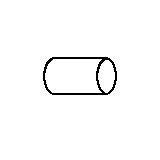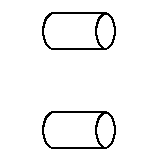Roman ring
A Roman ring, in theoretical physics, is a configuration of wormholes where no subset of wormholes is near to chronology violation, though the combined system can be arbitrarily close to chronology violation.
For example, an Earth-Moon wormhole whose far end is 0.5 seconds in the "past" will not violate causality, since information sent to the far end via the wormhole and back through normal space will still arrive back on Earth (-0.5 + 1) = 0.5 seconds after it was transmitted; but an additional wormhole in the other direction will allow information to arrive back on Earth 1 second before it was transmitted (time travel), although it is believed that relative time between the transmission of the information in one wormhole throat and out the other end in a ring structure will remain the same, because light wouldn't have violated local proper time, because the distance traveled by the information would take time, either by going the long way or through the wormhole.
Semiclassical approaches to incorporating quantum effects into general relativity seem to show that the chronology protection conjecture postulated by physicist Stephen Hawking fails to prevent the formation of such rings, although some experts such as Matt Visser feel that there are reasons to think the semiclassical approach is unreliable here, and that a full theory of quantum gravity will likely uphold chronology protection.



References
- Visser, Matt. "Traversable wormholes: the Roman ring". arXiv:gr-qc/9702043
 .
. - Visser, Matt. "van Vleck determinants: traversable wormhole spacetimes". arXiv:gr-qc/9311026
 .
.